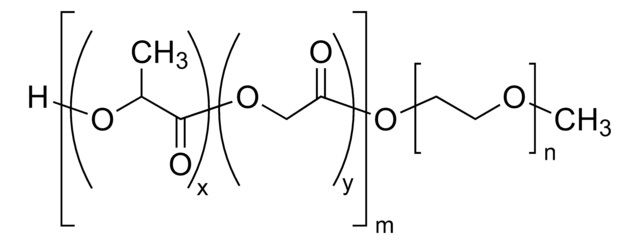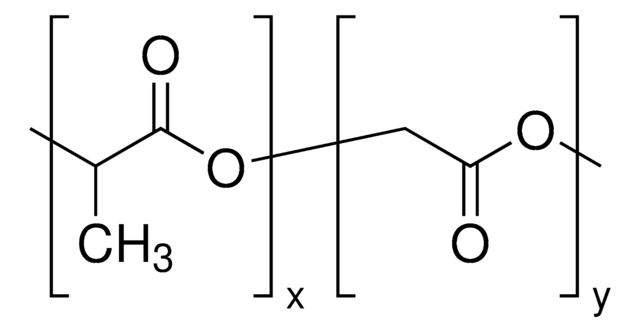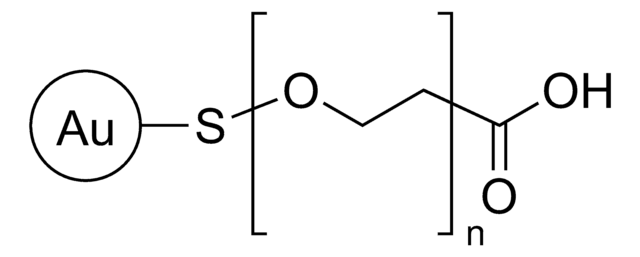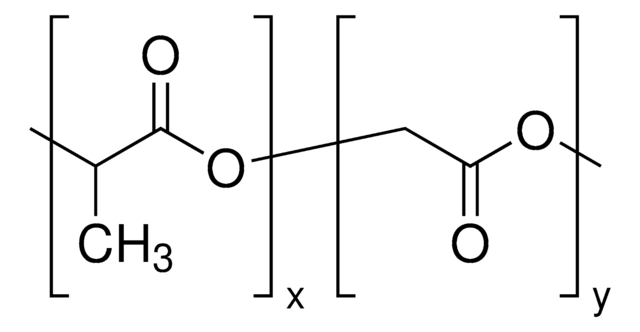913138
Poly(ethylene glycol) methyl ether-block-poly(lactide-co-glycolide)
PEG average Mn 2,000, PLGA average Mn 10,000, lactide:glycolide 50:50
Sinônimo(s):
PEG-PLGA, PEG2K-PLGA10K, Polyethylene glycol, mPEG-b-PLGA
About This Item
Produtos recomendados
Nível de qualidade
Formulário
powder or solid
proporção de alimentação
lactide:glycolide 50:50
peso molecular
PEG average Mn 2,000
PLGA average Mn 10,000 (by NMR)
cor
white to beige
temperatura de armazenamento
−20°C
Procurando produtos similares? Visita Guia de comparação de produtos
Aplicação
Código de classe de armazenamento
11 - Combustible Solids
Classe de risco de água (WGK)
WGK 3
Ponto de fulgor (°F)
Not applicable
Ponto de fulgor (°C)
Not applicable
Escolha uma das versões mais recentes:
Certificados de análise (COA)
Não está vendo a versão correta?
Se precisar de uma versão específica, você pode procurar um certificado específico pelo número do lote ou da remessa.
Já possui este produto?
Encontre a documentação dos produtos que você adquiriu recentemente na biblioteca de documentos.
Nossa equipe de cientistas tem experiência em todas as áreas de pesquisa, incluindo Life Sciences, ciência de materiais, síntese química, cromatografia, química analítica e muitas outras.
Entre em contato com a assistência técnica






